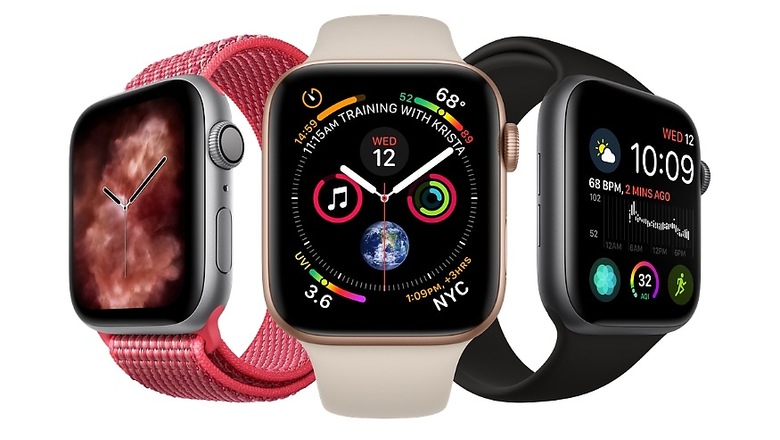
views
The Apple Watch was already considered a lifesaver before, and the new EKG (electrocardiogram) feature on the Apple Watch Series 4 has garnered a lot of praise for its accuracy. The EKG feature helps in detecting abnormal heart rhythms which could be a symptom of Atrial fibrillation or A-fib, a condition which could lead to a stroke, blood clot, or heart failure. Seeing how much research goes into the Apple Watch, it should come as no surprise that the company has applied for a new patent with the US Patent and Trademark Office (USPTO) titled Passive Tracking Of Dyskinesia/Tremor Symptoms. These are involuntary muscle movements likely to be experienced by somebody with Parkinson's Disease. The data from the Watch's motion sensors could be used along with the Unified Parkinson's Disease Rating Scale (UPDRS). Apple's patent notes that dyskinesia and tremors usually occur when a Parkinson's patient is being well-treated for other symptoms of the disease.
Apple states in the application: "Patients with PD are typically treated using dopamine (e.g., levodopa) replacement therapy to help reduce some of the symptoms of PD. Over time, dopamine replacement therapy becomes less effective and begins to induce more side effects, such as dyskinesia". Monitoring Parkinson's symptoms through the Apple Watch would be beneficial not just for patients but also for doctors because it will help them understand what kind of involuntary movements their patients are experiencing during a specific moment in the day. In its patent application, Apple states: "A patient's quality of life is largely dependent on how precisely clinicians titrate and schedule the patient's medications to minimize the patient's symptoms. This is a challenge for clinicians because each patient has a different combination of symptoms that can change and become more severe over time. Also, on any given day the symptoms may fluctuate based on medications, food intake, sleep, stress, exercise, etc...[This] provides all-day symptom/severity tracking information [and] provides a clinical tool for evaluating patient response to medication. As well as providing this data to periodically help clinicians adjust medication, it also helps the wearer to better plan activities around symptom patterns."
The sketches filed with Apple's patent might show a watch, but Apple says that the device in the patent is a computer. The ultimate goal for Apple Watch engineers seems to be to perfect a non-invasive glucose monitoring system for the wearable device. Insulin-dependent diabetics are forced to draw blood before each meal in order to get a fresh blood glucose reading. A non-invasive test would use technology to replace the painful needle pokes and save diabetics a ton of money that they currently spend on disposable test strips and lancets. Last year, Apple had filed a patent application for "absorption spectroscopy" technology which can be used to determine how much glucose is in the blood based on the absorption of ultraviolet light. Should Apple perfect this technology, growth in Apple Watch sales could soar even higher.
Recently, 74-year old Roy Robinson of Fort Worth, Florida credited the EKG function on his Apple Watch Series 4 for saving his life. Robinson was visiting family over Thanksgiving when he noticed that he was getting out of breath after climbing the stairs. He kept receiving notifications on his Apple Watch that read, "You’re in A-fib" all through the day. While he did not know what that meant, Robinson drove himself to the hospital after he googled A-fib post-Thanksgiving dinner. At the hospital, he told the doctors that his watch told him he was in A-fib. Robinson said that he was hooked up to the electrocardiogram in the ER and after about 30 seconds of looking at (it), the doctor said that he was being admitted. While at the hospital, everyone came by to see the "guy that was saved by the Apple Watch". "I’m not sure if it saved my life," Robinson had stated to the press, "but it sure as hell helped."



















Comments
0 comment